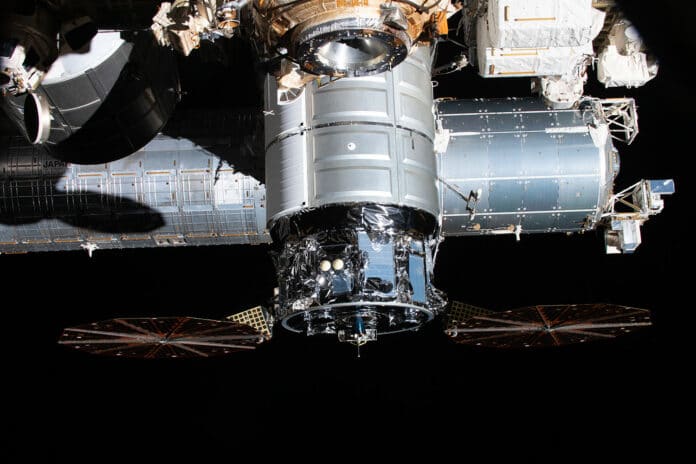Northrop Grumman Corporation’s Cygnus cargo spacecraft successfully boosted the orbit of the International Space Station (ISS). Docked to the ISS in February, Cygnus fired its main onboard engine to adjust the orbit of the station to the desired altitude to support upcoming operations.
Weighing around 445 tonnes and still growing, the ISS has been in orbit since 1998. It is the largest artificial object in space and the largest satellite in low Earth orbit, regularly visible to the naked eye from Earth’s surface. The station orbits approximately 250 miles (402 km) above Earth and requires a periodic reboost. Currently, this job is carried out by visiting the Russian Progress cargo spacecraft and the Russian Zvezda propulsion module.
On Saturday, June 25, the Cygnus cargo spacecraft successfully fired its main engine to boost the altitude of the ISS. Northrop Grumman said the first successful reboost of the ISS using a U.S.-built private spacecraft incorporated lessons learned from an earlier attempt that was suspended as a precautionary measure. An investigation by engineers showed that the observed parameters were as expected for the reboost, and flight limits were adjusted for Saturday’s successful attempt.
“This reboost of the ISS using Cygnus adds a critical capability to help maintain and support the space station,” said Steve Krein, vice president of civil and commercial space, tactical space systems, Northrop Grumman. “It also demonstrates the enormous capability Cygnus offers the ISS and future space exploration efforts.”
Today, NASA announced that the flight controllers on the ground sent commands to release the Northrop Grumman Cygnus spacecraft from the Canadarm2 robotic arm after earlier detaching Cygnus from the nadir port of ISS’s Unity module. At the time of release, the station was flying about 260 miles over the Pacific Ocean.
The Cygnus spacecraft successfully departed the space station more than three months after arriving at the microgravity laboratory to deliver about 8,300 pounds of supplies, scientific investigations, commercial products, hardware, and other cargo for NASA.
Following a deorbit engine firing, Cygnus will begin a planned destructive re-entry, in which the spacecraft – filled with trash packed by the station crew – will safely burn up in Earth’s atmosphere.
